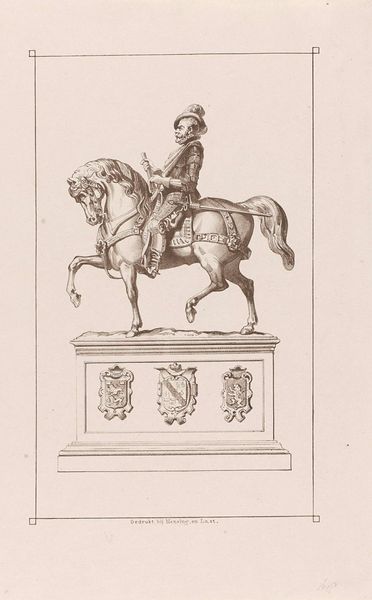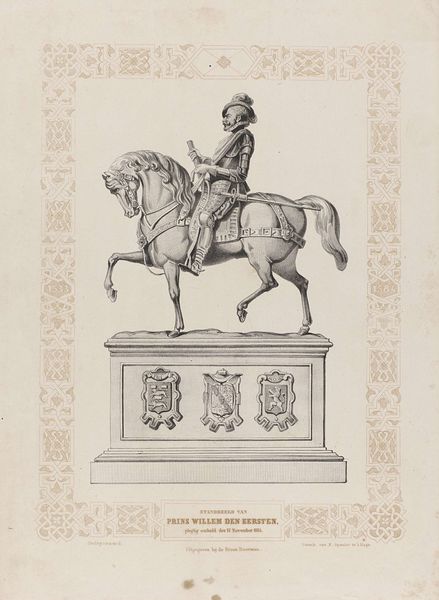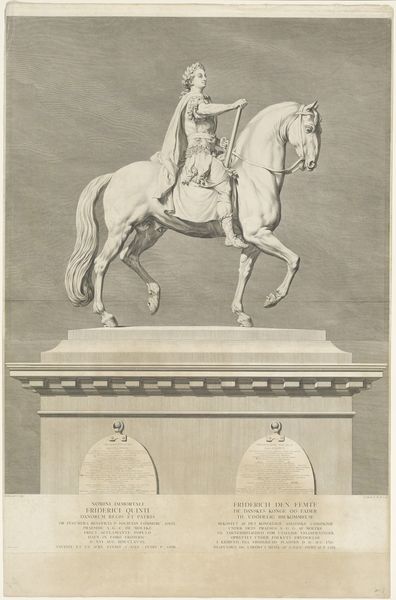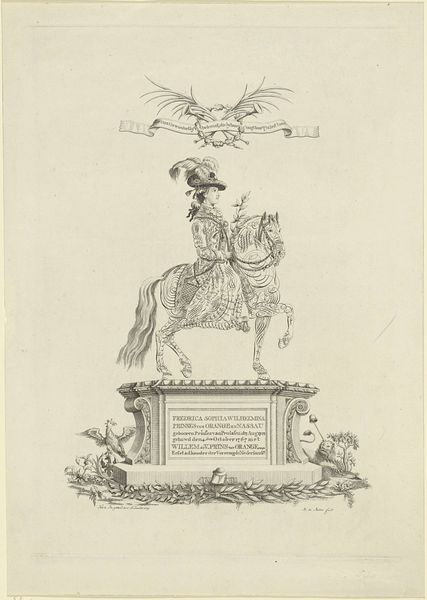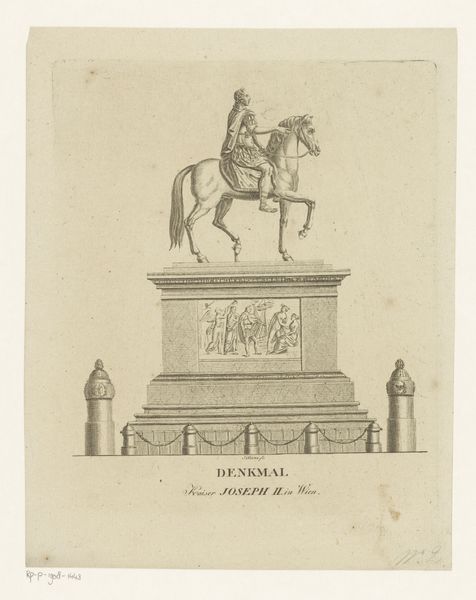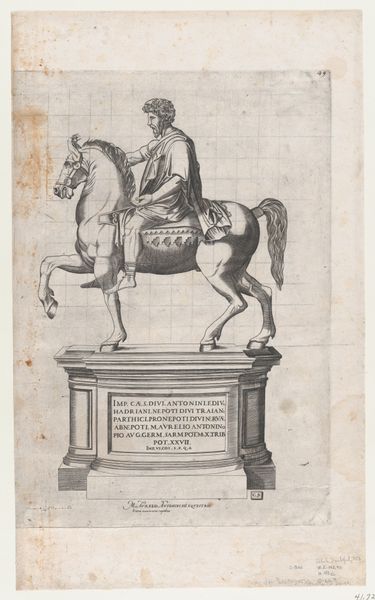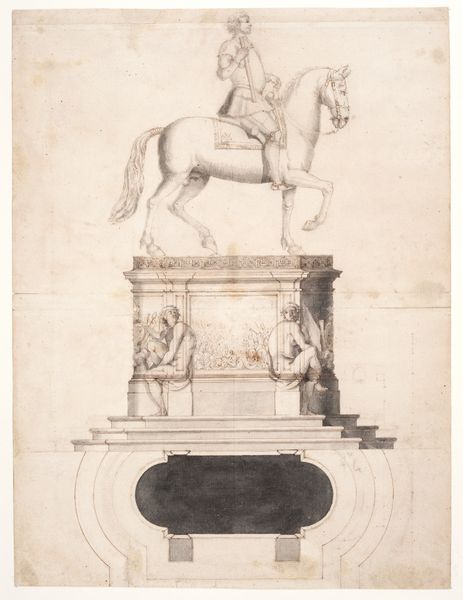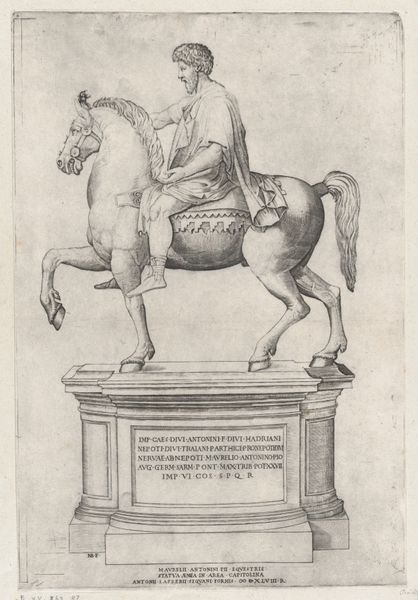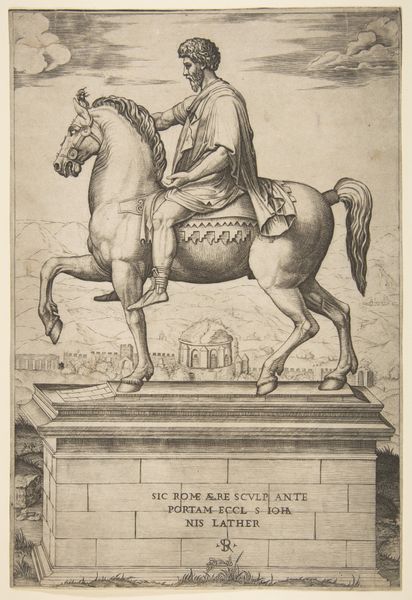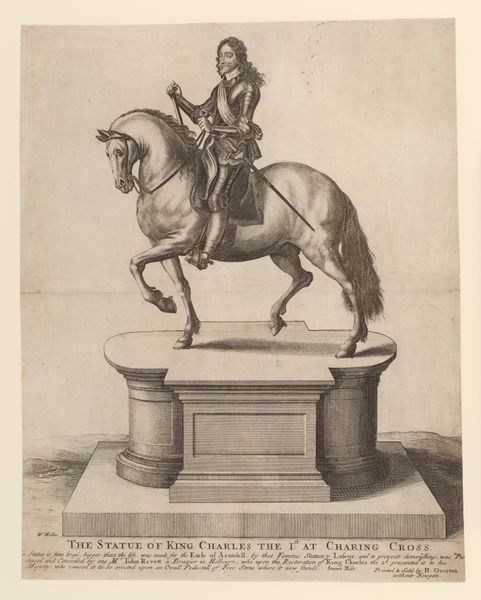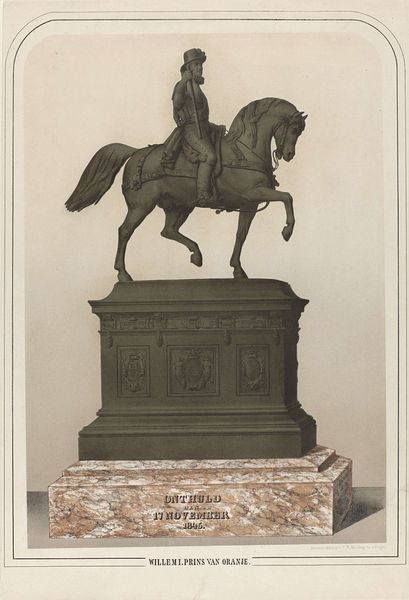
Ruiterstandbeeld van Willem I, prins van Oranje, op het Noordeinde te Den Haag 1845 - 1863
0:00
0:00
hendrikfrederiksartor
Rijksmuseum
print, sculpture, engraving
#
portrait
#
neoclacissism
# print
#
pencil sketch
#
old engraving style
#
landscape
#
sculpture
#
engraving
Dimensions: height 352 mm, width 263 mm
Copyright: Rijks Museum: Open Domain
Hendrik Frederik Sartor created this print of the equestrian statue of William I in The Hague. The statue stands as a potent symbol of Dutch identity, but the history it represents is far from simple. Consider the historical and cultural context: Sartor created this image during a period of nation-building in the 19th century, where defining national heroes was critical. William of Orange, the leader of the Dutch revolt against Spanish rule, was a central figure in constructing a narrative of Dutch independence and Protestant identity. But this narrative often overshadowed other histories, such as the perspectives of those marginalized or excluded during the formation of the Dutch nation. How does this image contribute to a selective memory of the past, emphasizing certain aspects of Dutch identity while sidelining others? The emotional resonance of this image lies in its appeal to national pride, while the statue itself can also be seen as a reminder of the complexities inherent in the construction of any national identity.
Comments
No comments
Be the first to comment and join the conversation on the ultimate creative platform.
